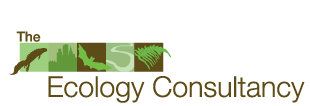Mitigation & enhancement
We provide a comprehensive service, from the planning and feasibility stages right through to detailed design and implementation. Our services include mitigation, translocation and habitat creation, under licence from Natural England.
Mitigation
Mitigation is designed to limit the effects of development, by enabling wild plants and animals to survive during the building phase and to live in harmony with the new development. Our mitigation services include building artificial homes such as swift boxes and invertebrate log-piles and also include management details, such as retention of areas of relaxed mowing, to provide foraging for bats and butterflies. Bat-mitigation is specialised work which may involve the re-creation of bat-roosts.
Case-study Leamouth Peninsular
Translocation
Translocation is what we do when we cannot accommodate species on the development site. Prior to capture, we use GIS mapping and field surveys to identify suitable natural habitat nearby. We then carefully capture animals such as reptiles or newts and release them into the new site. This process can take many months to ensure that almost all individuals are saved from harm.
Habitat creation
Habitat creation (or often re-creation), is used to enhance a site, providing new habitats for plant, insect and animal species. We have considerable expertise in establishing meadow areas, ponds, reed-beds and woodland. We have many examples of creating new habitats with developers and architects, often for eco-housing schemes, as well as recreation of lost habitat.
Case-study Crowhurst Corner
We are responsive to our clients needs and continually develop our business to maintain a high quality, cost-effective, service. Our ecologists are members of the Institute of Ecology and Environmental Management and are committed to the Institute's Code of Professional Conduct.
Case study: Tye Wimbish Passivhaus, Essex
The Ecology Consultancy made a number of recommendations, to Hastoe Housing Association, aimed at enhancing natural habitats on areas destined for housing, all of which were adopted by their contractors.
Read moreCase study: Haberdashers’ Aske’s Crayford Academy, Crayford, Bexley
The Ecology Consultancy carried out the initial habitat survey and protected species assessment on this site and identified the presence of common lizards during further surveys for reptiles. To enable the development of the new Academy it was agreed to translocate the population of common lizards to a receptor site.
Read moreCase study:
Green Roof London
Considered the largest green roof in the City of London, measuring 1,500m2, at 1 Wood Street, and owned by Eversheds LLP, was in need of biodiversity improvements in 2008.
Read moreRecommended by us
- Casinos Not On Gamstop
- Non Gamstop Casino
- Non Gamstop Casinos
- Casinos Not On Gamstop
- Gambling Sites Not On Gamstop
- Non Gamstop Casinos
- UK Online Casinos Not On Gamstop
- Best Non Gamstop Casinos
- Non Gamstop Casinos
- Sports Betting Sites Not On Gamstop UK
- Best Non Gamstop Casinos
- Non Gamstop Casinos
- Casinos Not On Gamstop
- Casinos Not On Gamstop
- Casinos Not On Gamstop
- UK Casino Not On Gamstop
- Non Gamstop Casinos UK
- Casino Sites Not On Gamstop
- Casino Not On Gamstop
- Casino Sites Not On Gamstop
- Best Casinos Online


